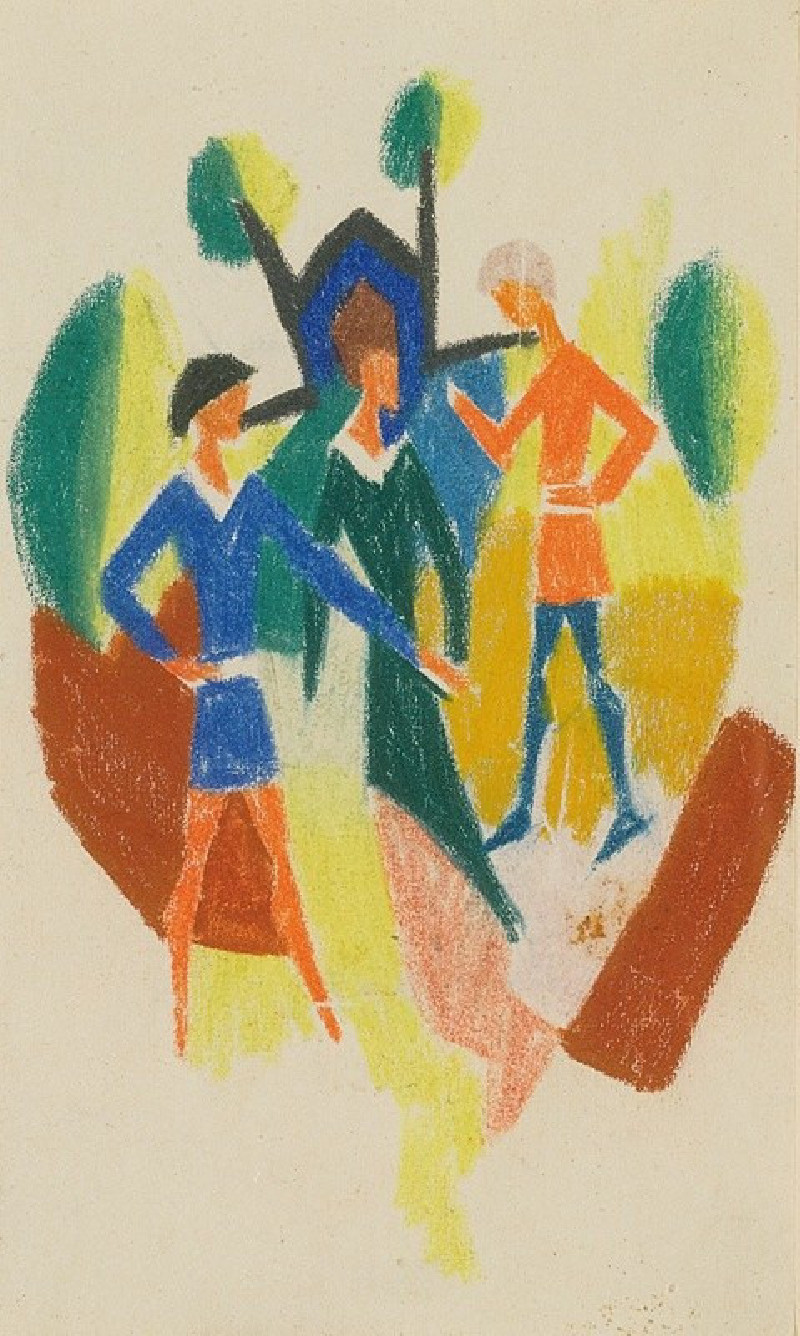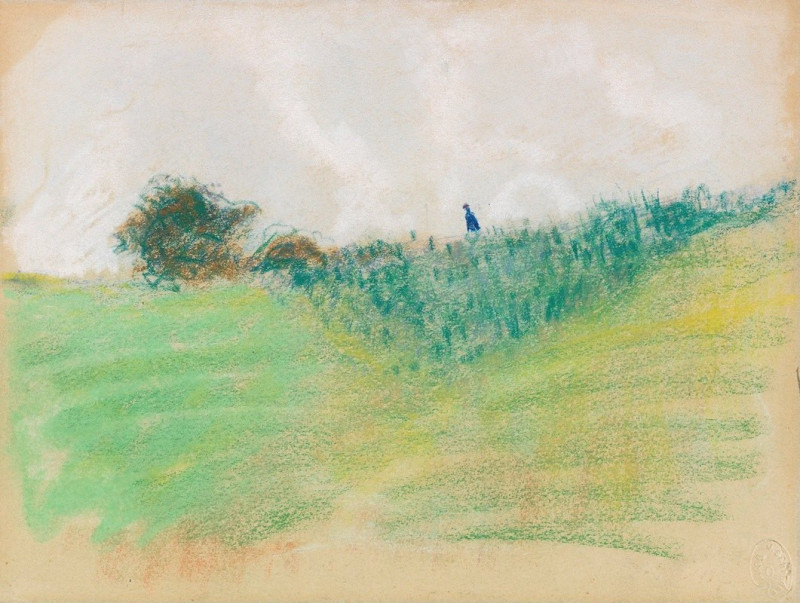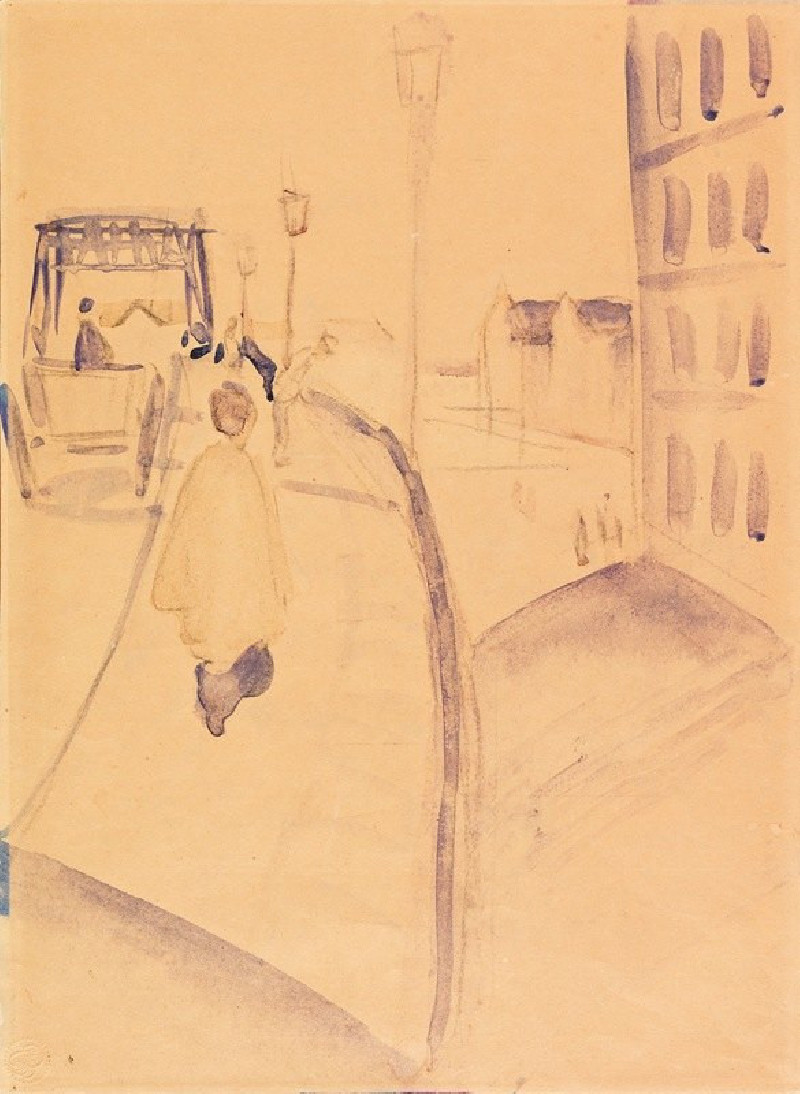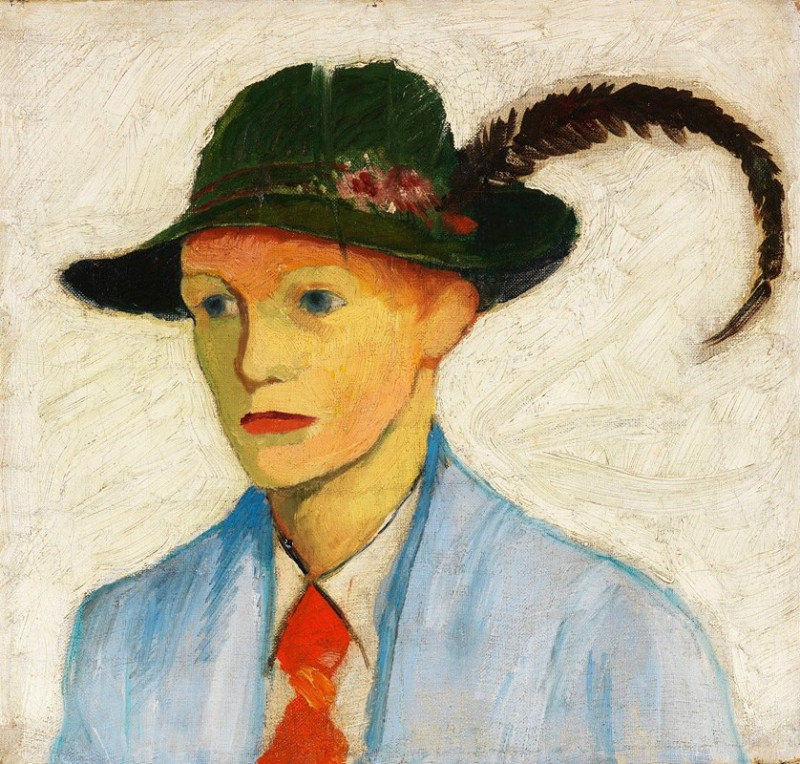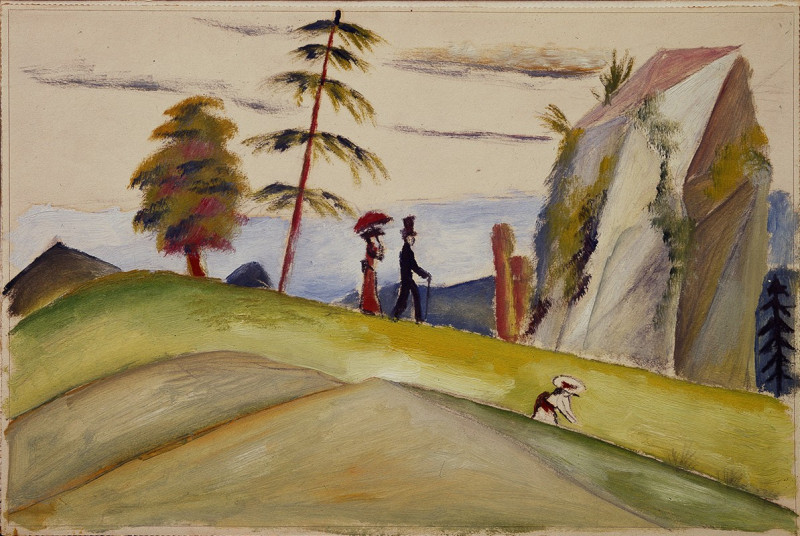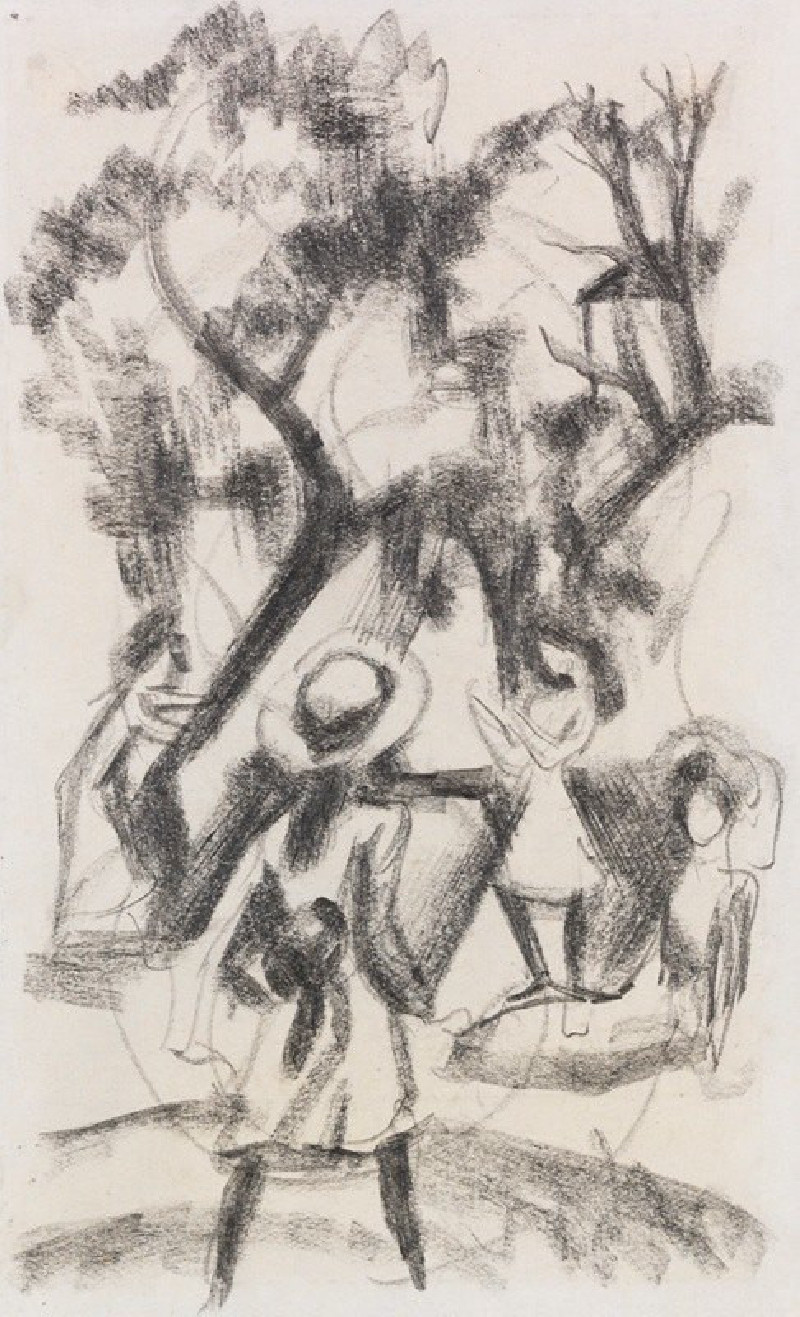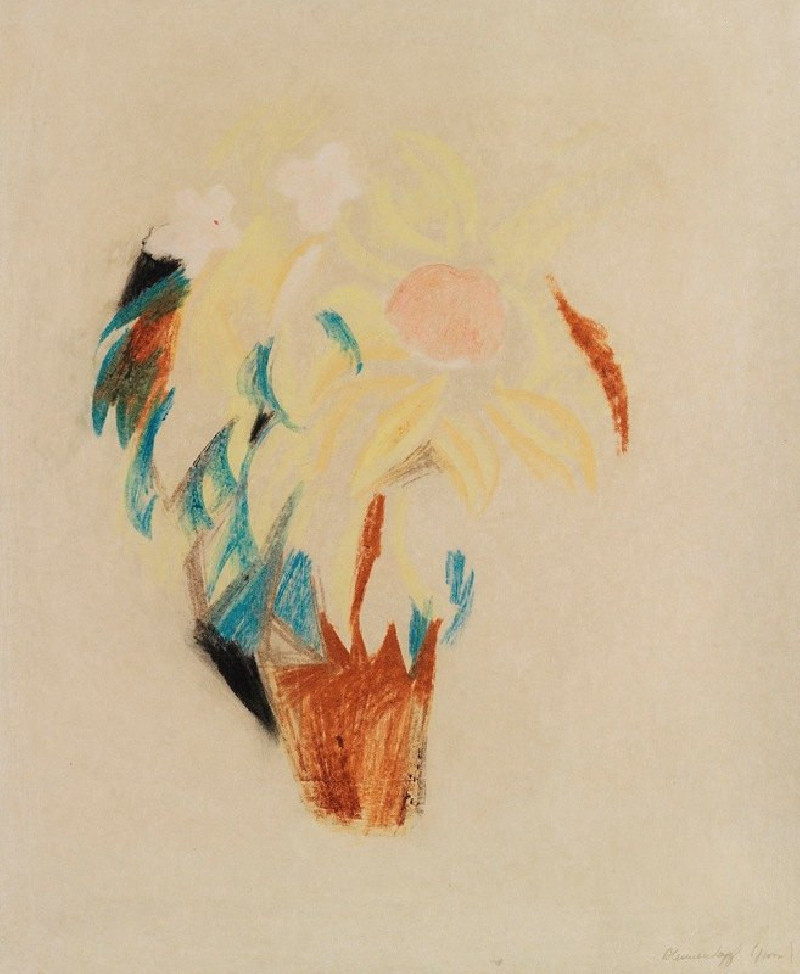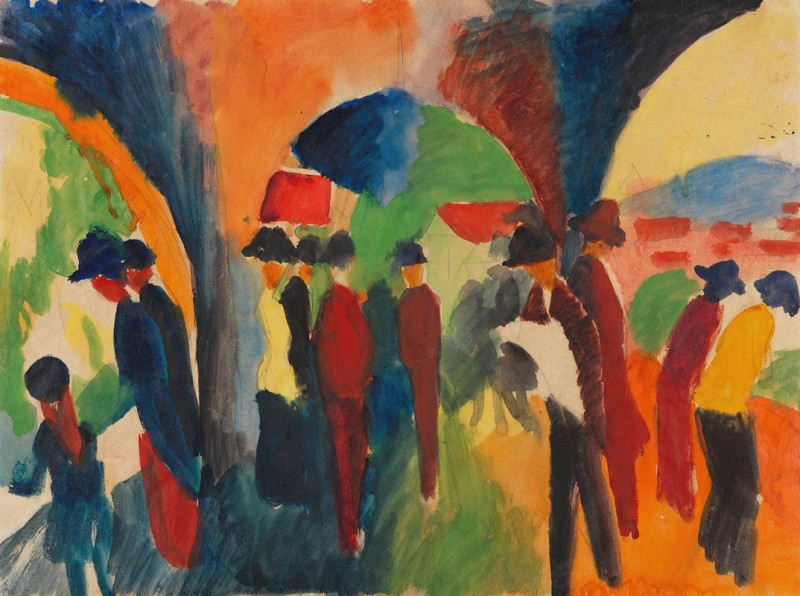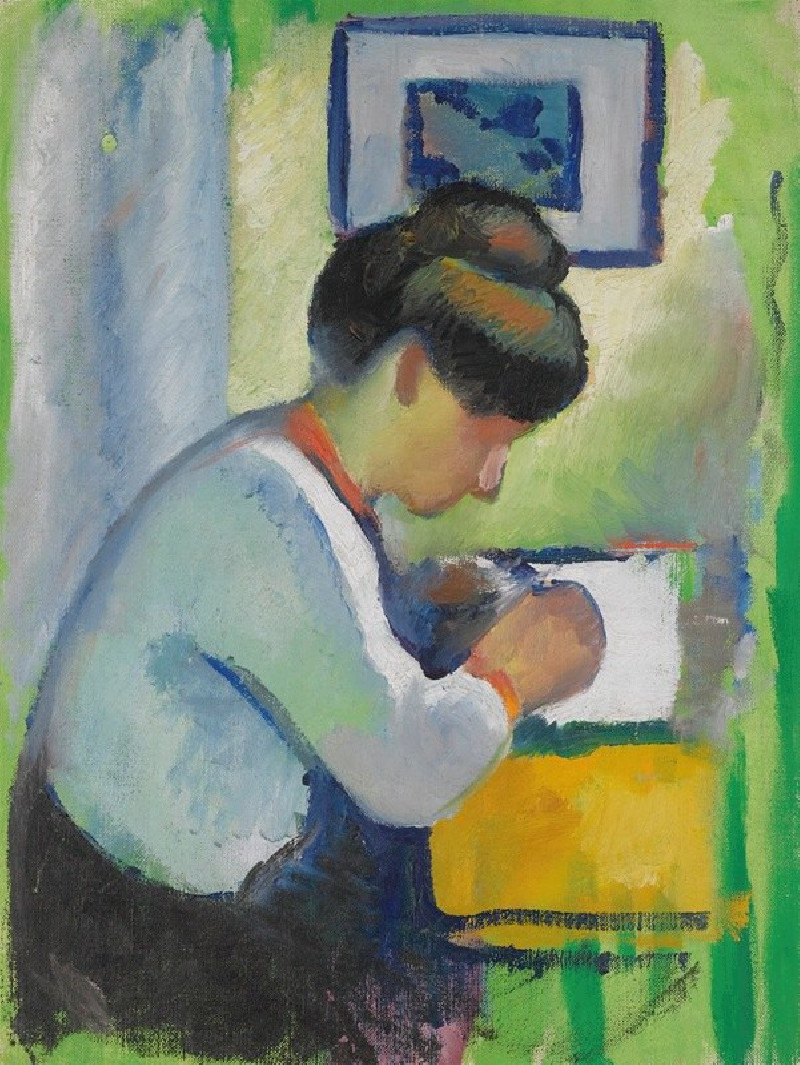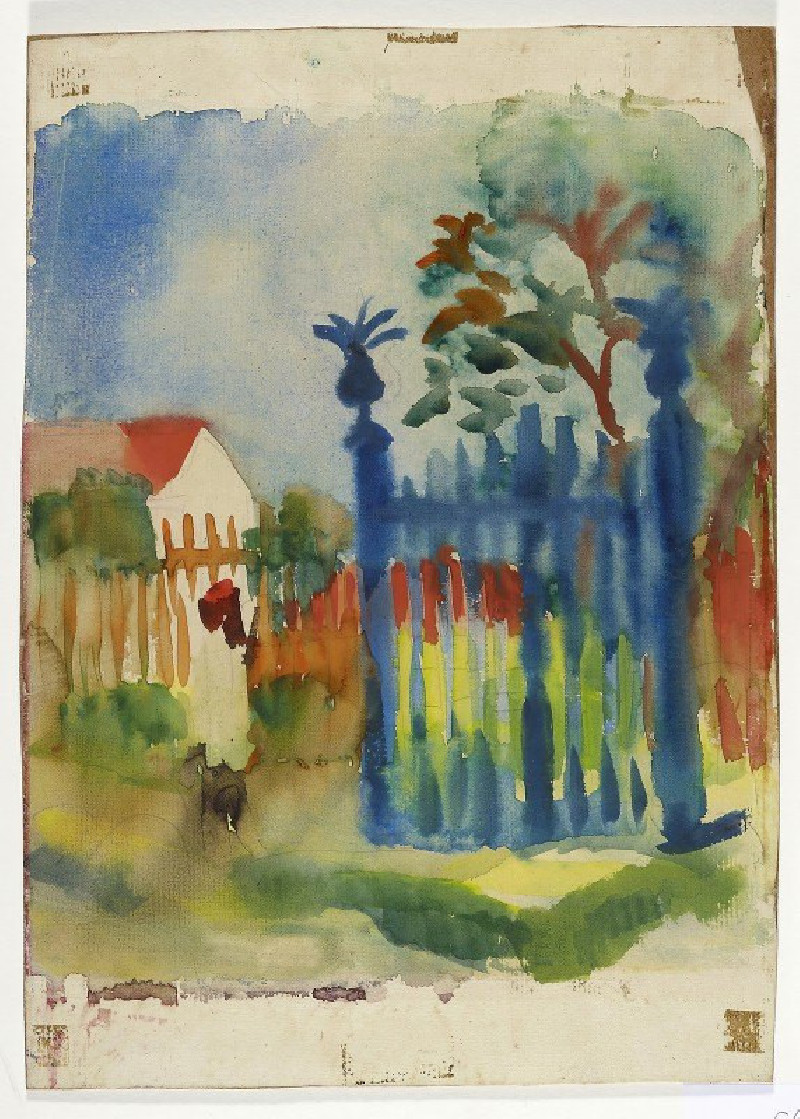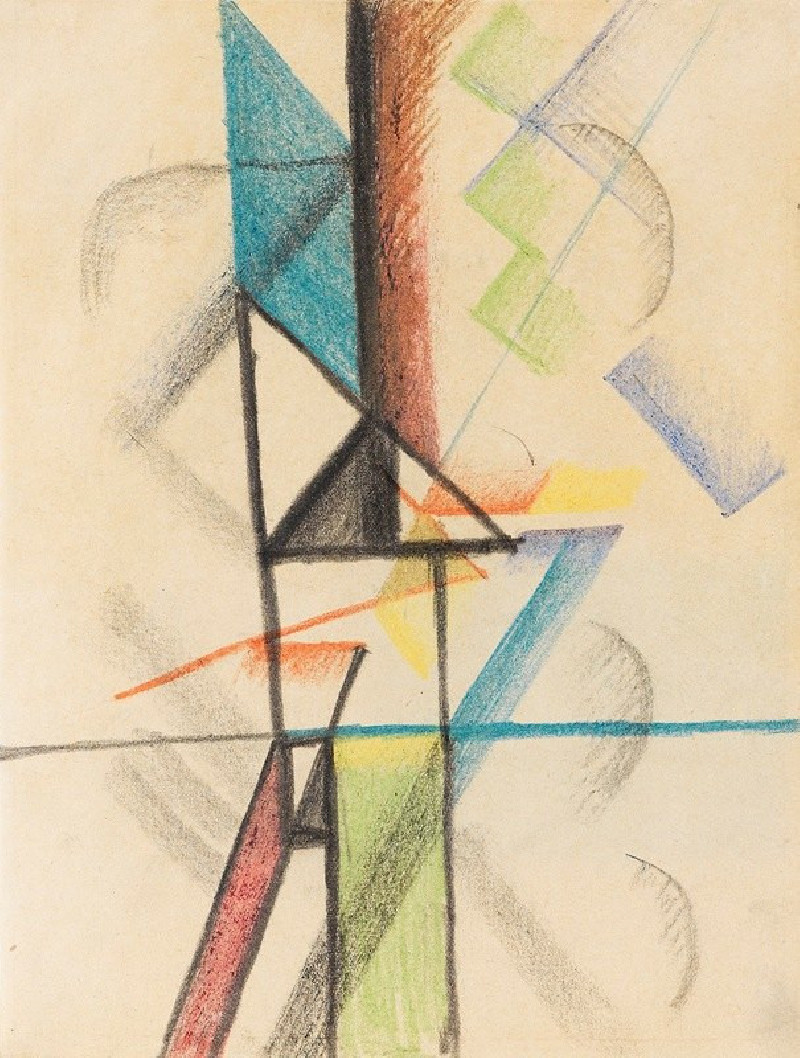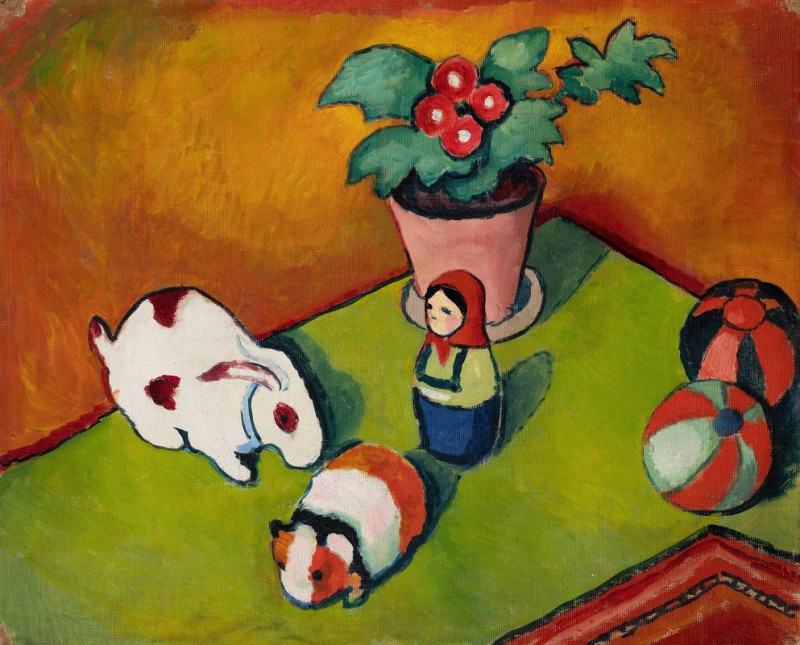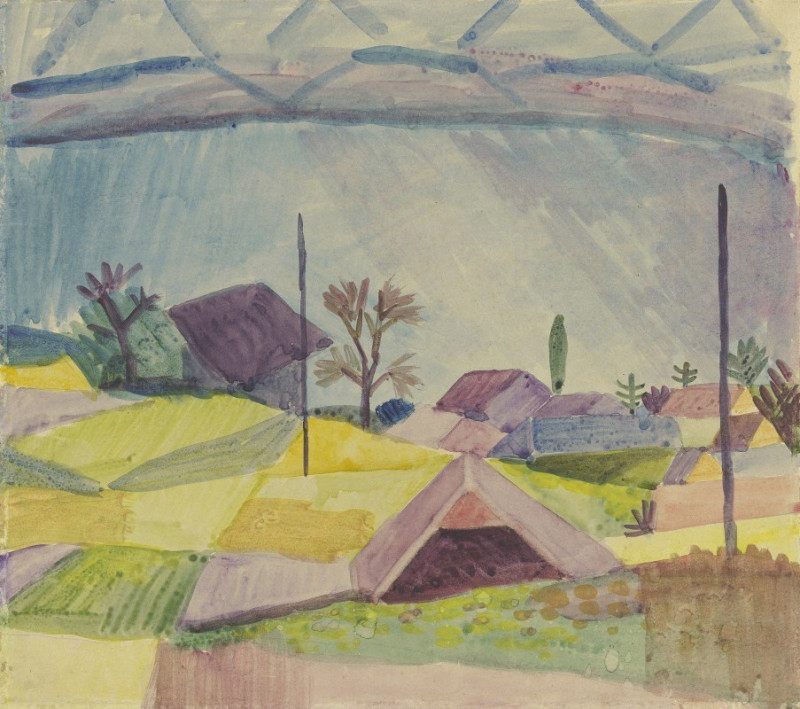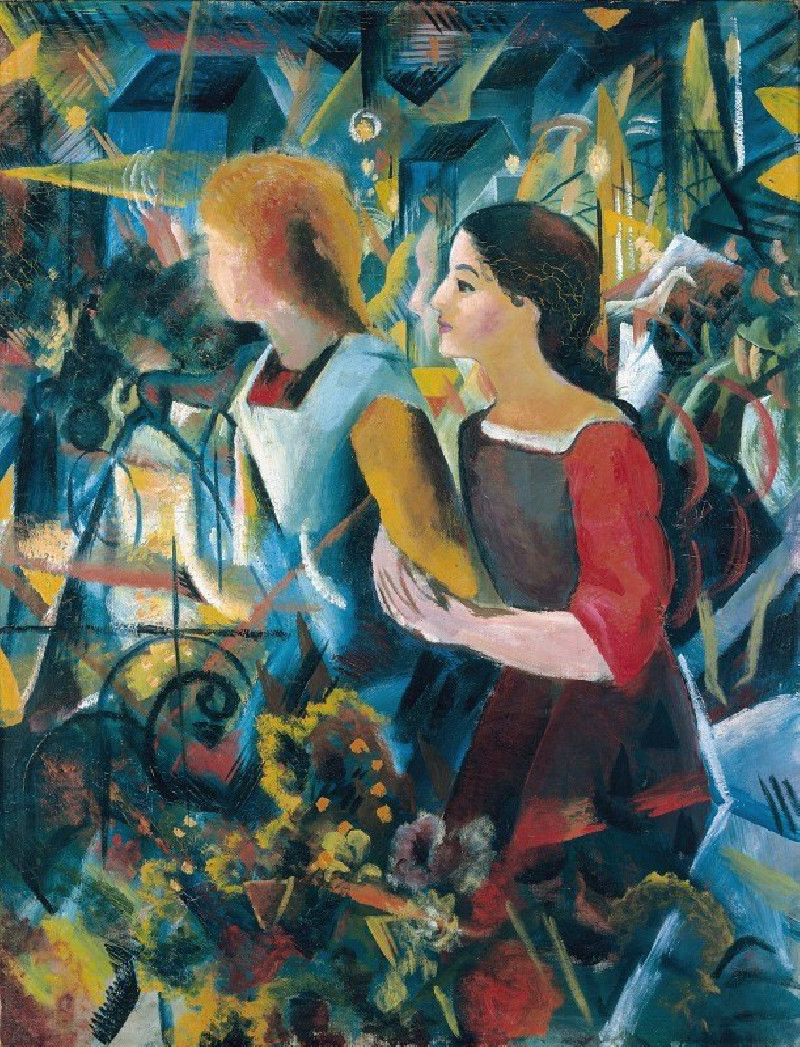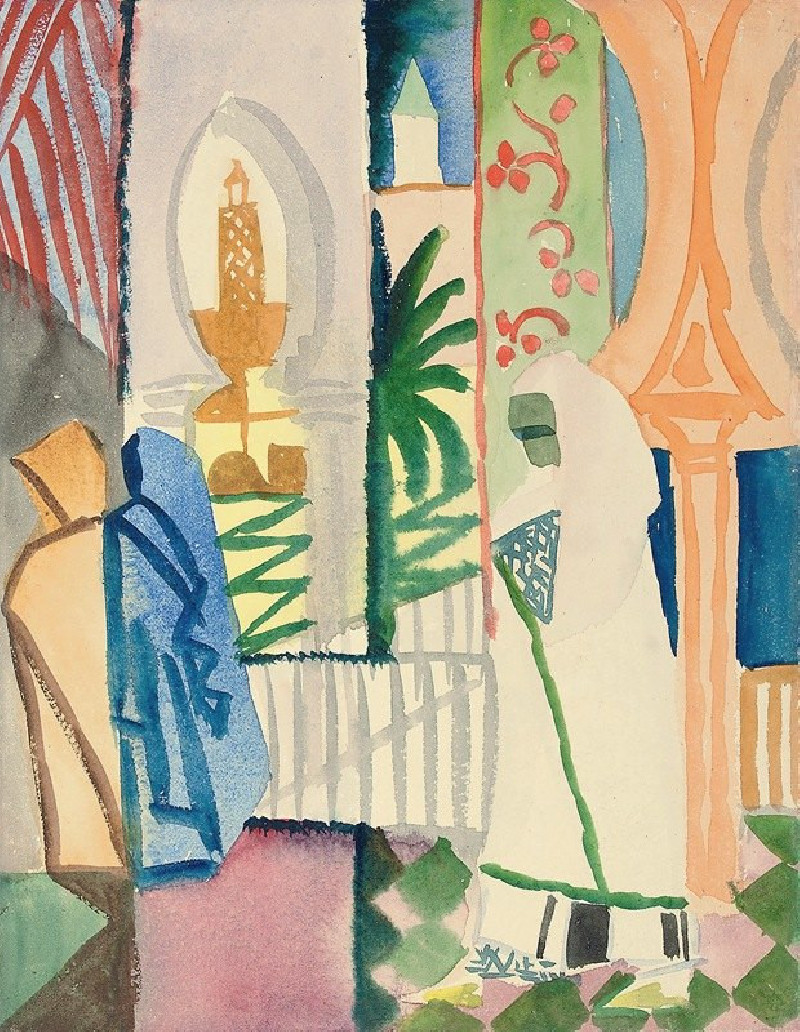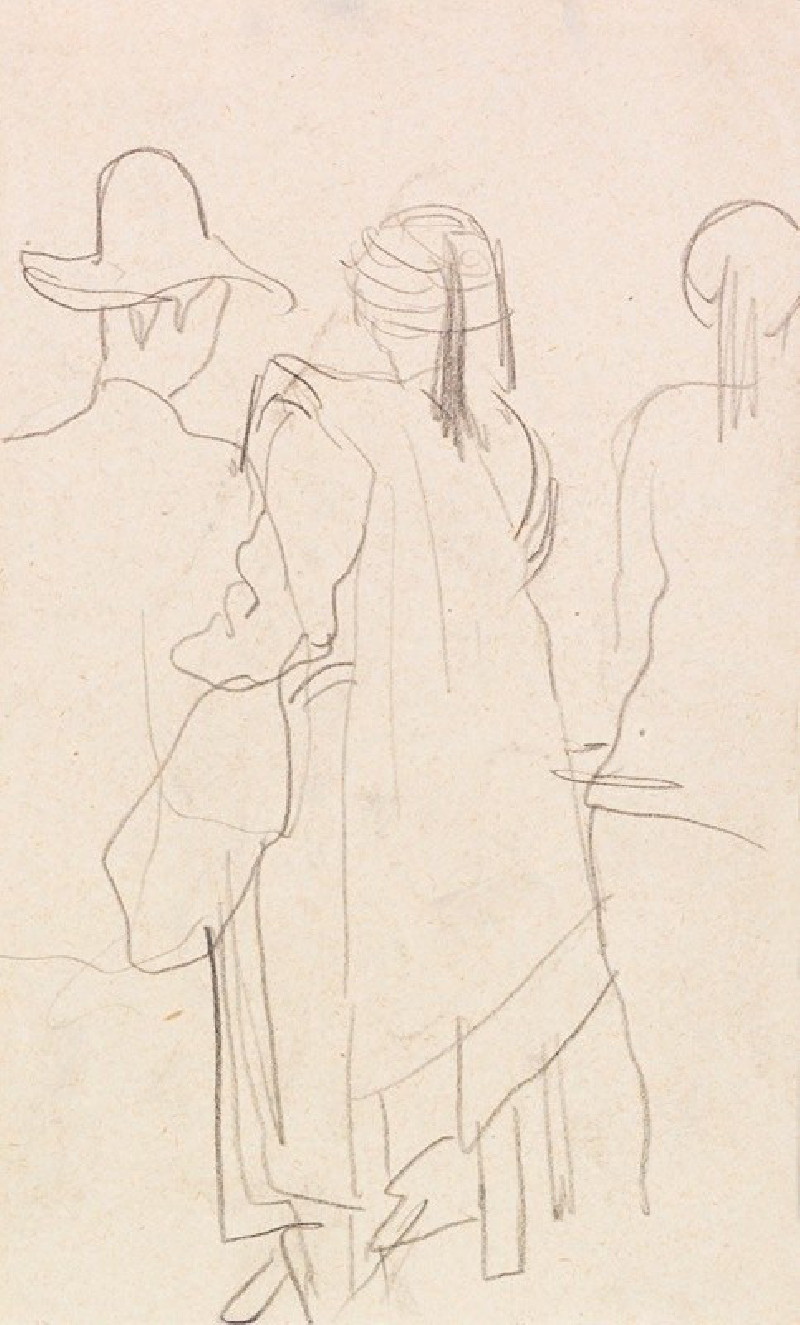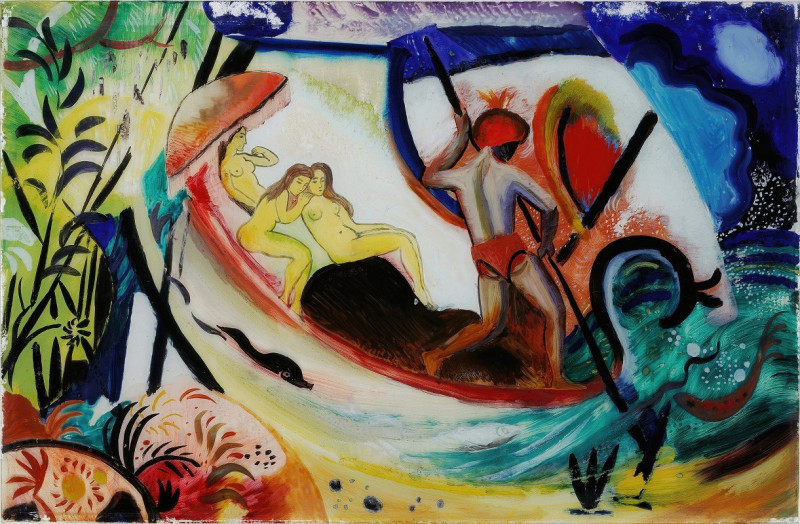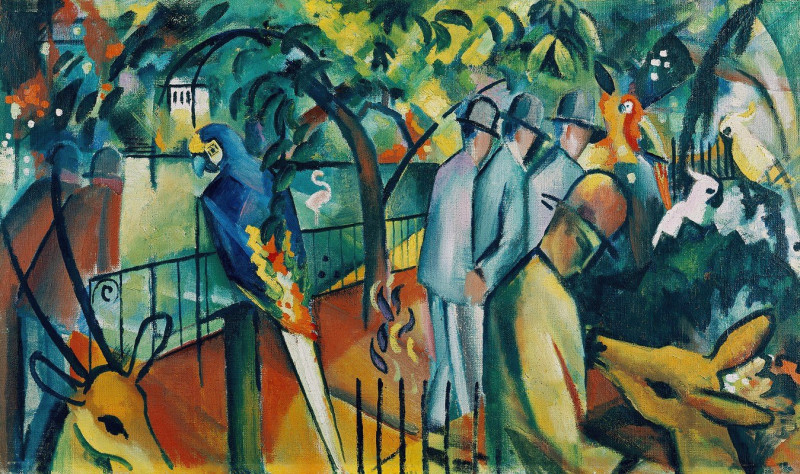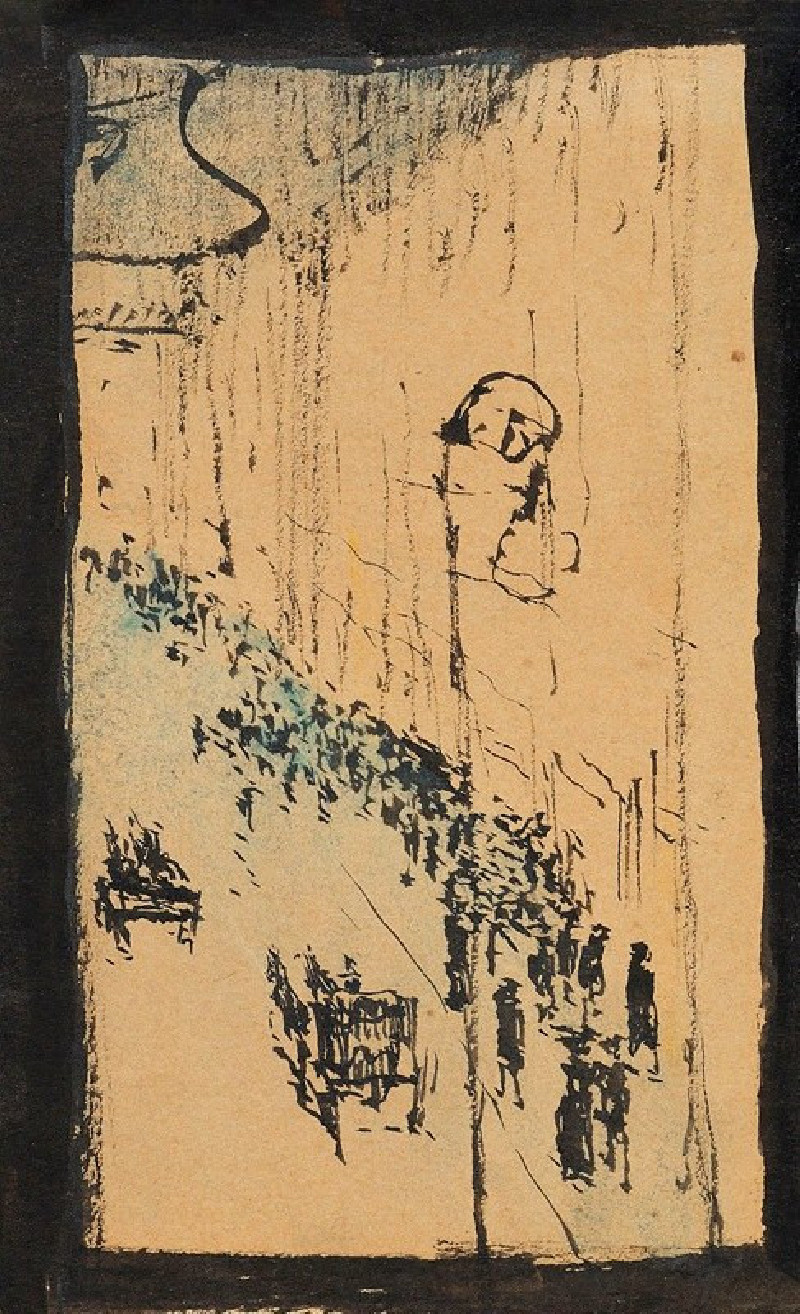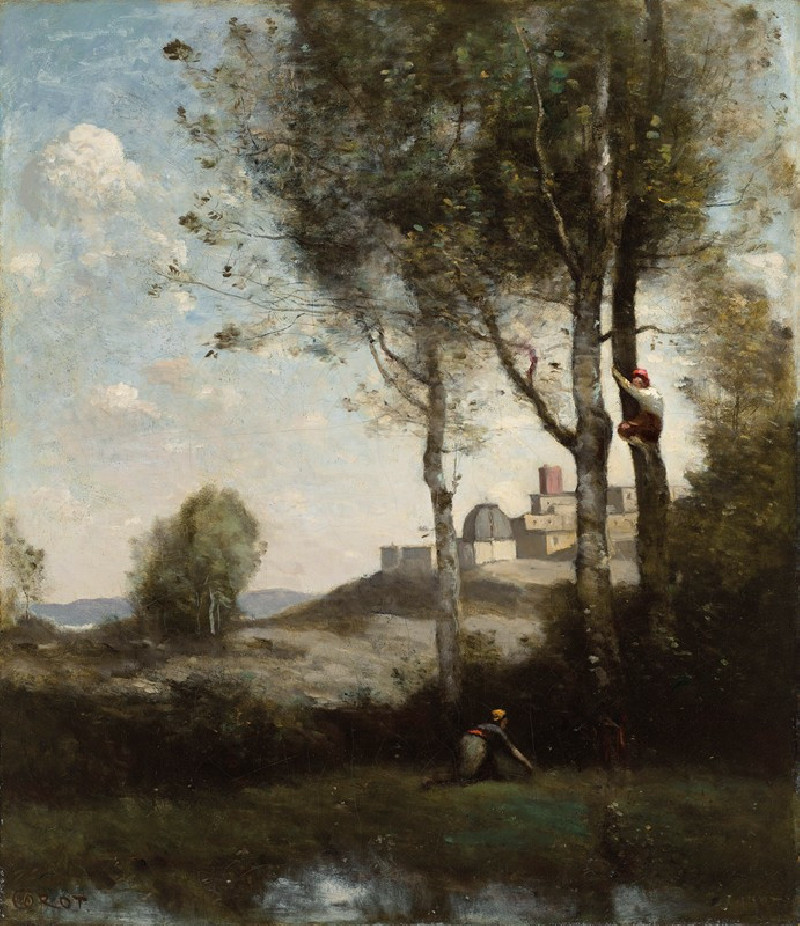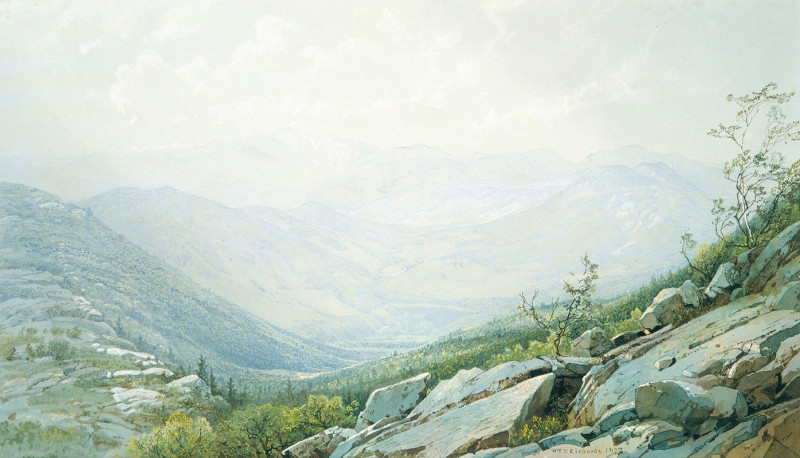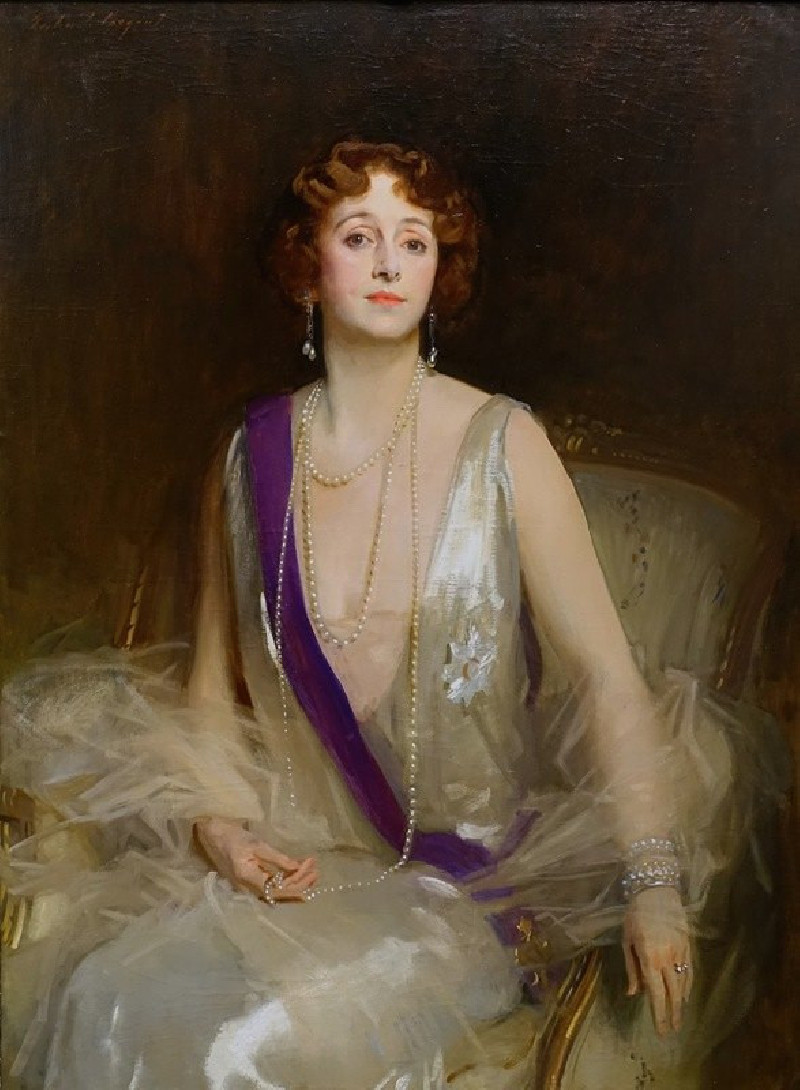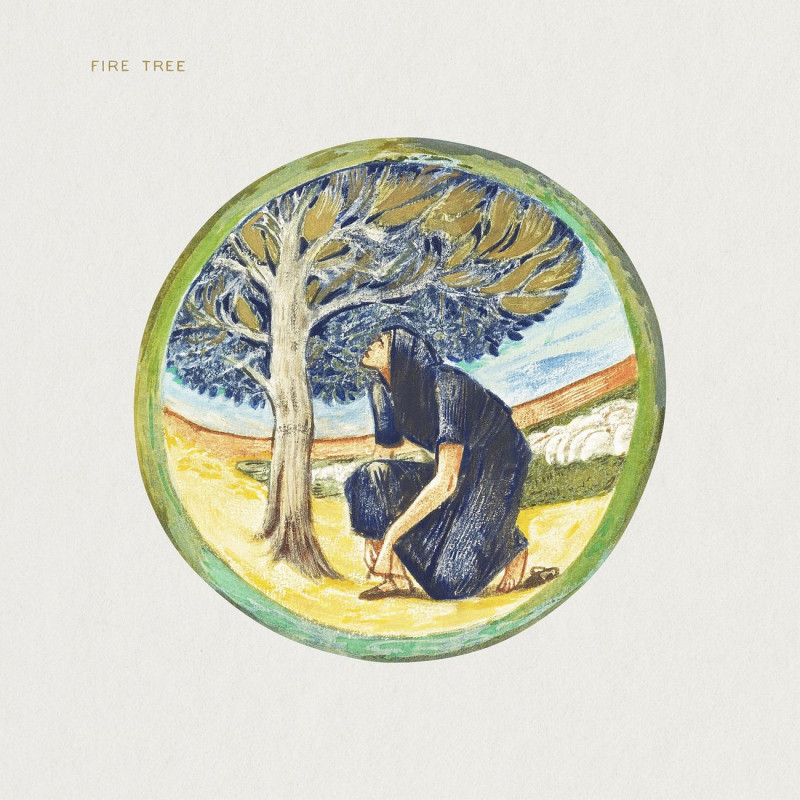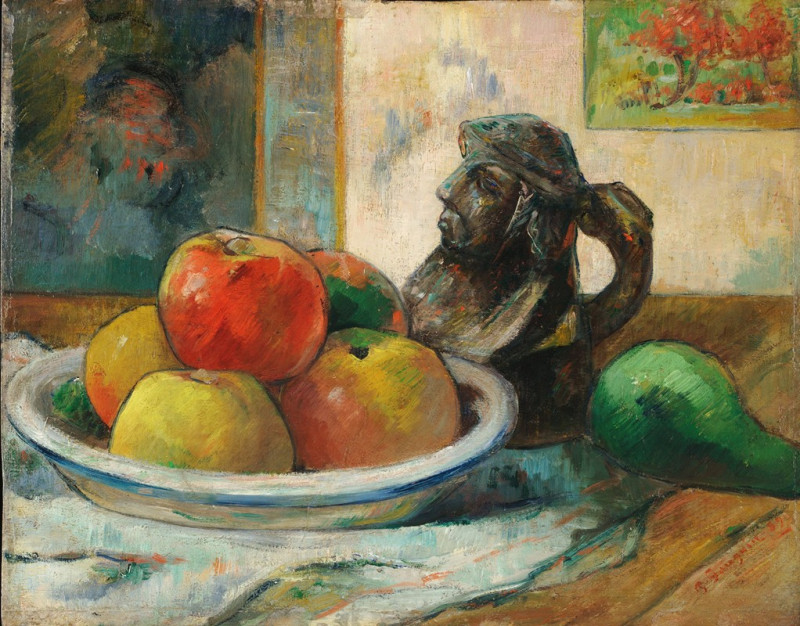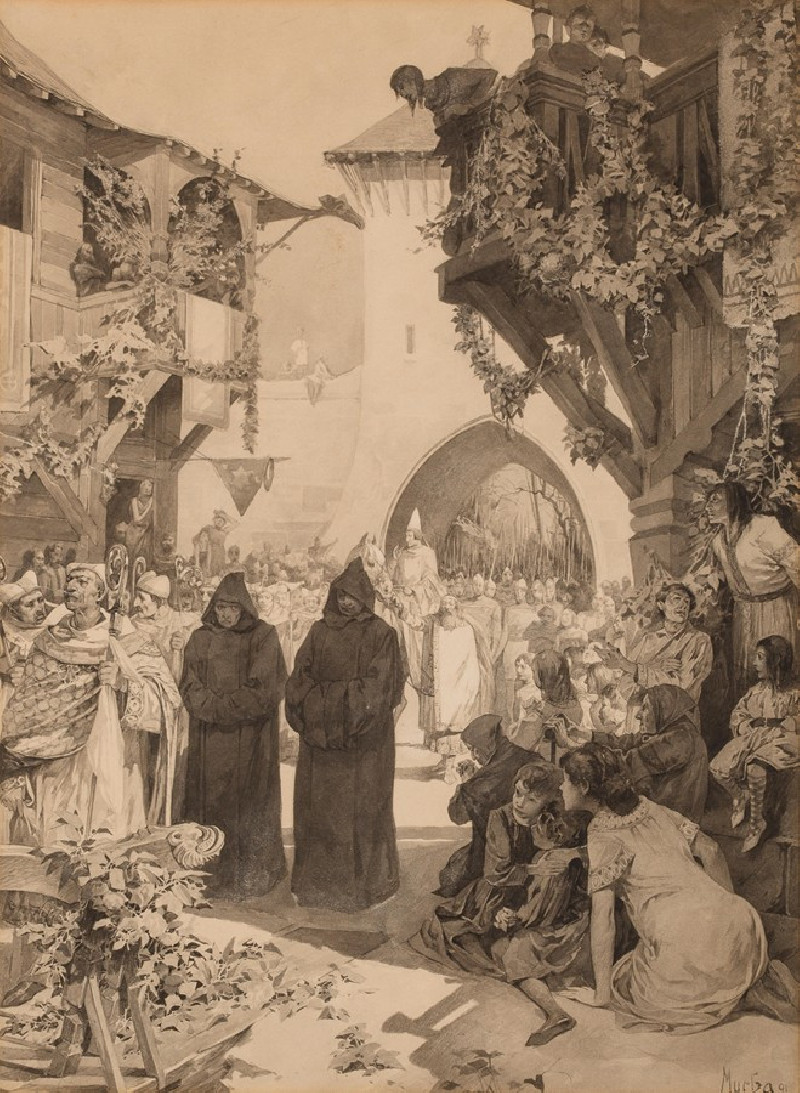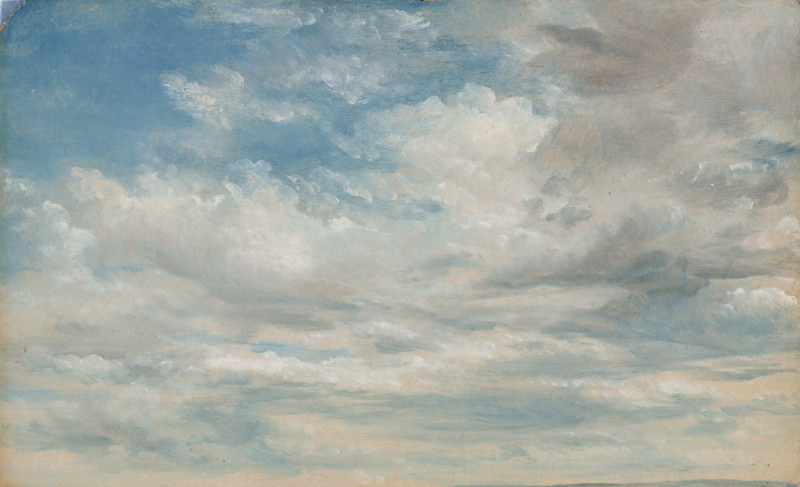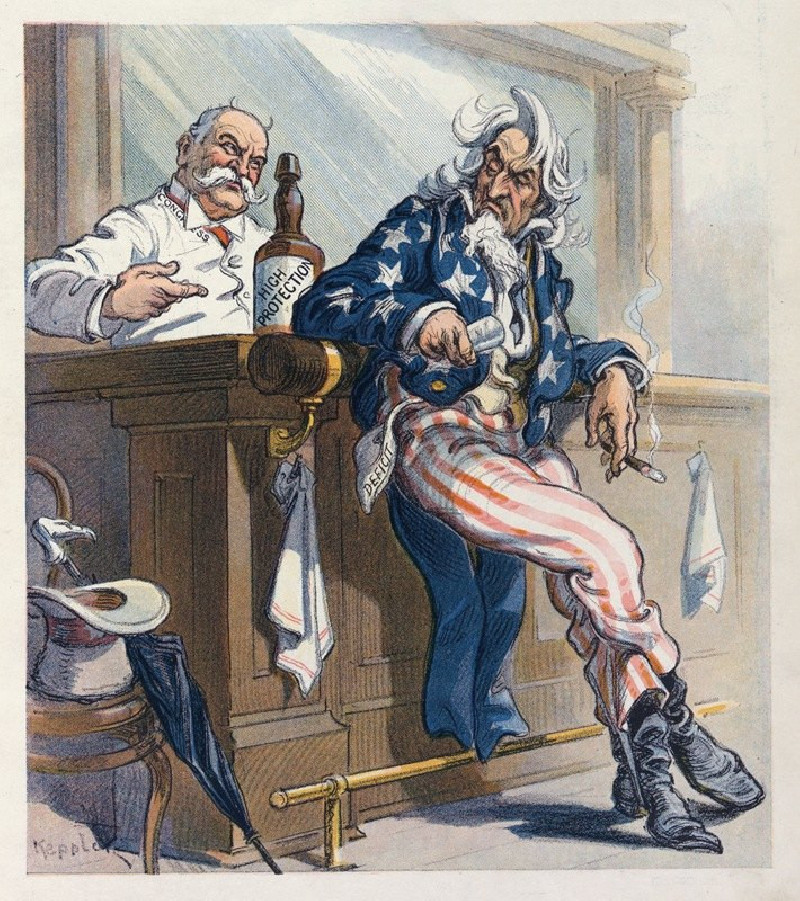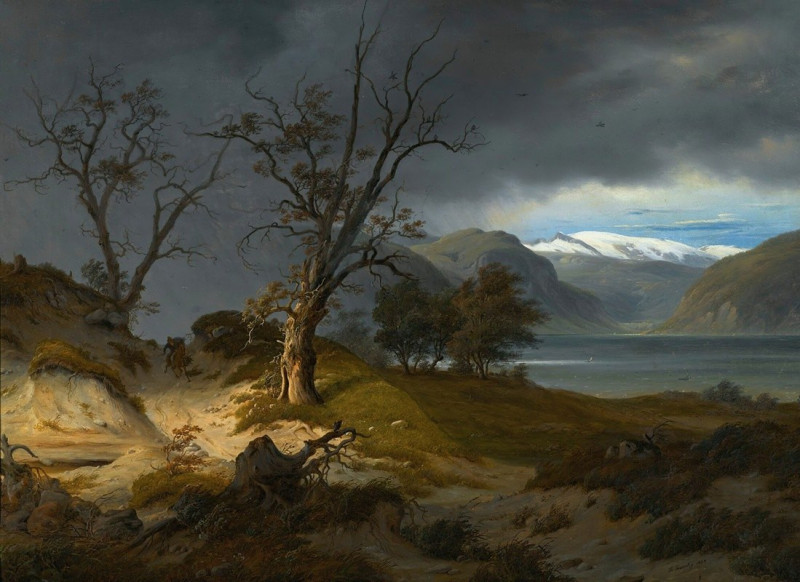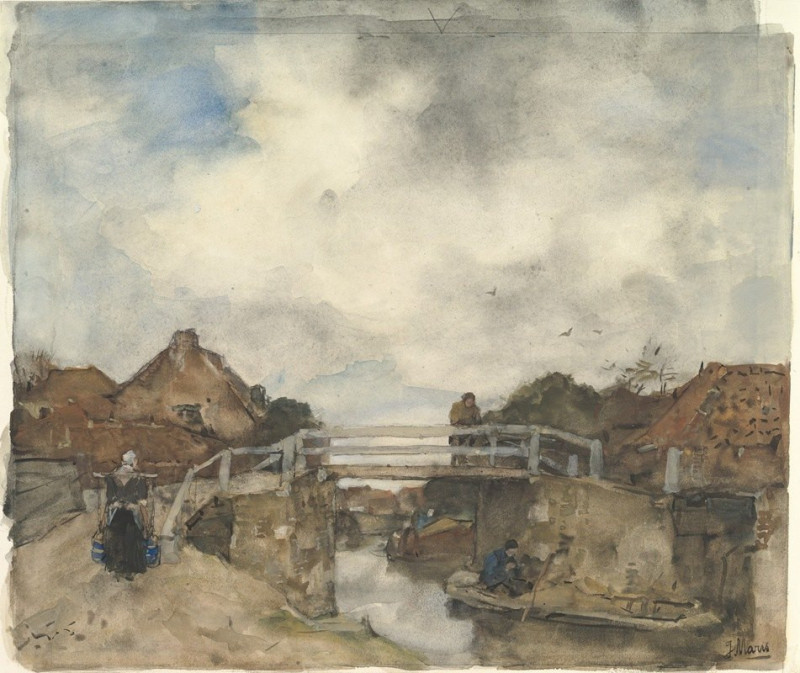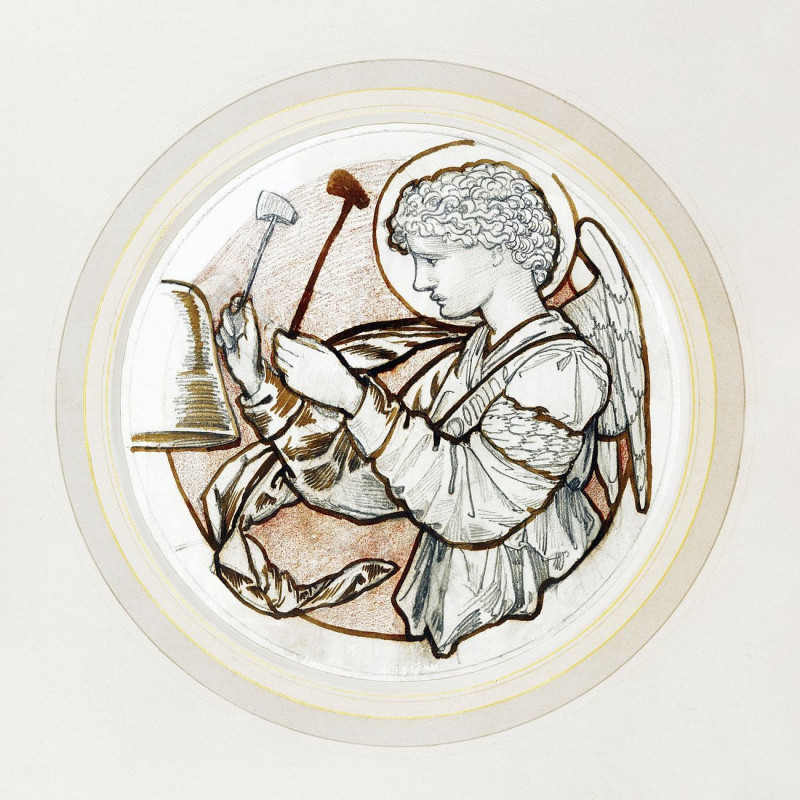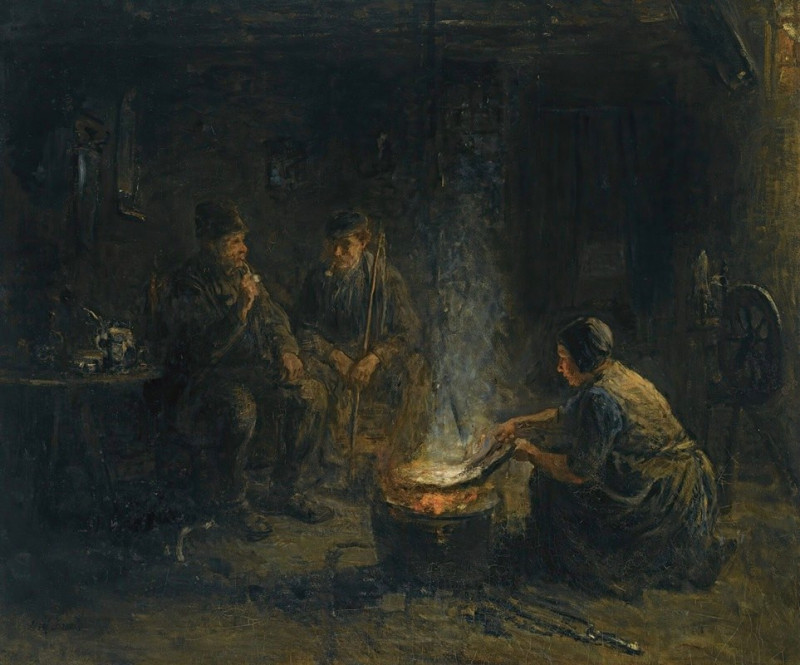Zwei Männer Und Frau (Stickerei) (Two Men And A Woman (Embroidery) (1914)
Technique: Giclée quality print
Recommended by our customers
More about this artwork
Welcome to our exploration of "Zwei Männer und Frau (Stickerei)" (1914) by the celebrated German artist, August Macke. This vibrant work of art showcases Macke’s distinctive style, characterized by bright colors and expressive forms, and reflects his affiliation with Expressionism and the Orphism movement.In this painting, Macke depicts three figures, two men and a woman, engaged in what appears to be a serene outdoor setting. The composition is lively yet harmoniously balanced, using bold, dynamic color blocks to outline human forms and their interactions. The woman, positioned centrally and slightly elevated, stands as the focal point, draped in a dark blue and green garment that suggests a blending of both natural and more introspective elements.The two men, clothed in bright blue and orange, flank the woman, creating a visual dialogue through their poses and the direction of their gaze, which converges on the woman. This could be interpreted as a moment of casual interaction or a deeper, symbolic gathering.Macke's use of color transcends mere representation; it evokes a mood and a vibrancy that is emblematic of the Orphic influences on his work, which often sought to blend visual elements with musical qualities. The background and foreground merge with abstract shapes and colors that suggest a natural landscape without detailing specific elements, leaving much to the viewer’s imagination and interpretation."Zwei Männer und Frau (Stickerei)" is a striking example of August Macke’s brief yet impactful contribution to early 20th-century modern art, encapsulating themes of human connection, the interplay between color and form, and the integration of the human figure within the abstract landscape.
Delivery
Returns
August Macke (3 January 1887 – 26 September 1914) was a German Expressionist painter. He was one of the leading members of the German Expressionist group Der Blaue Reiter (The Blue Rider). He lived during a particularly innovative time for German art: he saw the development of the main German Expressionist movements as well as the arrival of the successive avant-garde movements which were forming in the rest of Europe. Like a true artist of his time, Macke knew how to integrate into his painting the elements of the avant-garde which most interested him.

